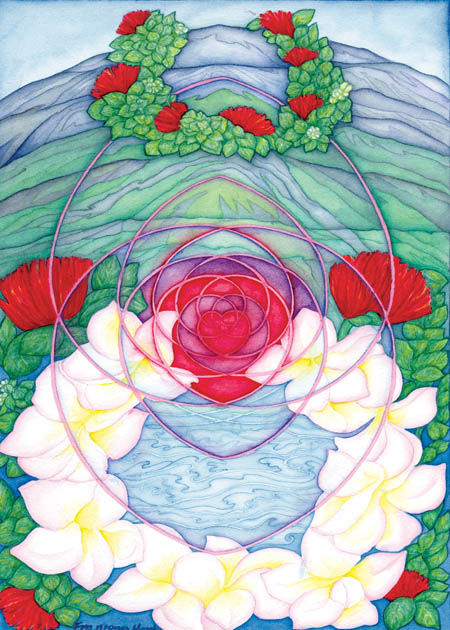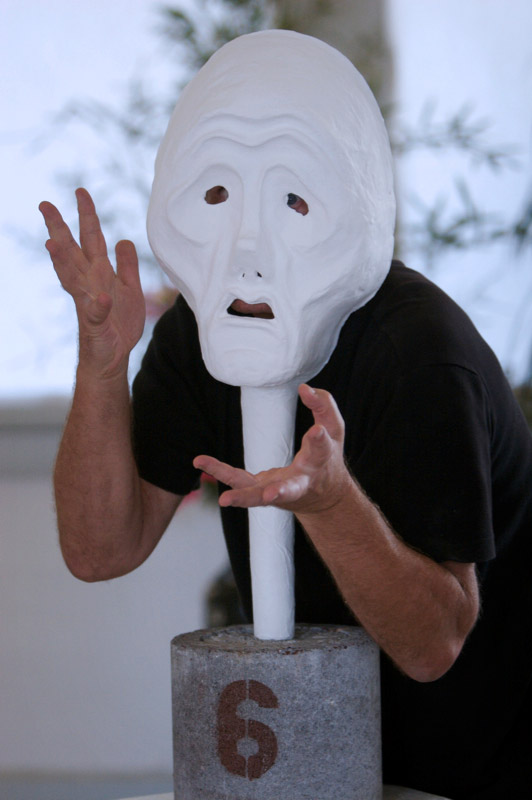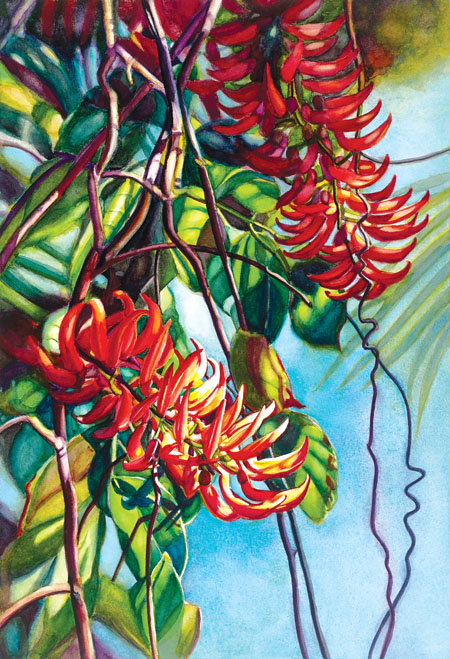
Carving Pathways to the Future: The Rocky Jensen Family Bonds in a Love of Art and Their Hawaiian Legacy
By Lucia Tarallo Jensen

In the year 1975, a blind prejudice still gripped the art world, believing that native Hawaiians, as well as other native artisans, were only competent to create on a craft level. Up until that time only one or two had broken the color barrier––and even then, as painters, creating nostalgic scenic work that was palatable to Western sensitivity. There was no venue for bonafide fine artists to exhibit. It was that year when Hale Nauā III, Society of Maoli Arts was formed by my husband, Rocky Ka‘iouliokahihikolo‘Ehu Jensen, and myself––going bravely where no other Hawaiian dared to go. Having recently returned from the continent, we both saw the urgency to establish a “place,” where indigenous Hawaiian artists could comfortably come together to exhibit their works in a style conducive to its importance in relationship to the blossoming renaissance. The exhibitions would be not as the ongoing tradition of natives on the mat, but as fine artists whose talents made them qualified to show in museums and galleries and especially in exhibitions, applauding their creativity and unique genius.
Sculptor, historical illustrator, educator, lecturer and serious cultural practitioner, Jensen created history by initiating the maoli (native) contemporary fine arts movement––his neck constantly on the chopping block, having always to champion an artistic cause that was oftentimes adversely received. To this day, he continues to not only champion that cause, but to also exhibit in all the premier venues throughout the country, fulfilling his kuleana, a “responsibility,” left behind by his talented grandparents from Lā‘ie, O‘ahu, and Pūko‘o, Moloka‘i. Towards that end, he finally had the opportunity to complete a monument to the Hawaiian war dead, Nā Lehua Helelei. The first of its kind since the Iconoclastic Reformation of 1819, it was installed in 1999 at Fort DeRussey’s Army Museum in Waikiki with pomp and circumstance. Uniquely impressive in that Rocky managed to not only return a component of his ancient culture into present-day consciousness––resuscitating five benign aspects of Kūnuiākea, the primary male principle––but was also mindful in giving deference to the foremost artform from his cultural past––elevating it from the level of commercial, store-sold trinket to that of the Divine. On these same resurgent lines, he was instrumental in the building of the Hawai‘iloa, the sequel to the Hōkūle‘a voyaging canoe, this one built entirely of wood. And, the last in his traditional endeavors is to build a Hale Kālai Ki‘i (Image Carving House) to his ancestors, one where his work can then be created from a personal and spiritually-controlled environment.
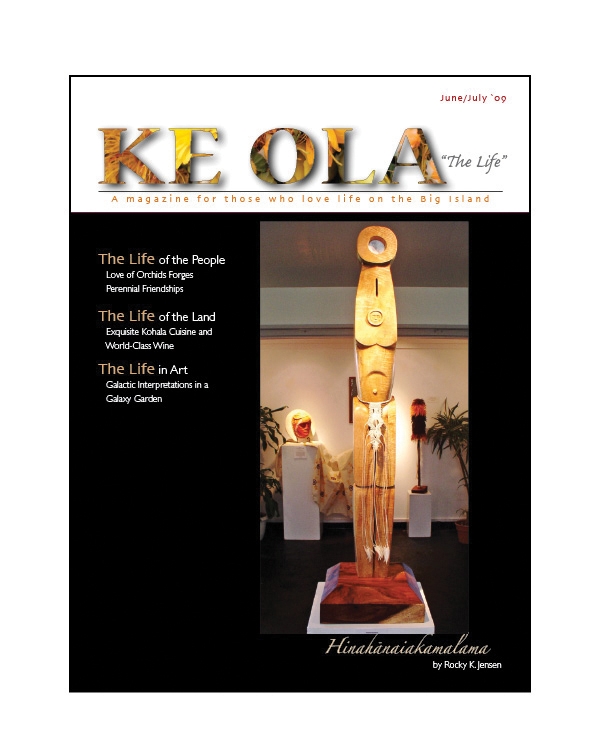
The first exhibition of Hale Nauā III, in 1976 at the Honolulu Hale (City Hall), was entitled Artistic Alana, coordinated to not only express an insight into the maoli culture, but also to introduce the first group of burgeoning Hawai‘i maoli artists—talented, creative, imaginative, well-educated and eager to join in the dissemination of their culture’s esoterica. Each exhibition, from that time until now, is presented with a theme that allows for a component of the culture to be delved into in depth, and this in turn shared with the viewer. Not to mention the fact that we have had the opportunity to always bring to the forefront fresh new talent that brings that amazing, cultural component to life––hundreds upon hundreds having passed through our halls in the past 35 years, some going on to create new arenas of cultural consciousness. Since that time, we’ve had 13 major exhibitions at the Bishop Museum, and more than 150 throughout the state and throughout the country, from California to New York, Canada, New Zealand, Austria, Paris. Most recently Rocky K. Jensen’s sculptures were part of the Bishop Museum exhibition, The Mysterious Hawai‘i: From the Feathered Gods to the Melting Pot, shown at the inaugural opening of the newly-built National Museum of Prehistory in Taiwan.
Jensen has been written up in the American Artists of Renown by Anne Avery; Crafts of America by Constance Stapleton; The California Art Review by Les Krantz; Art and Aesthetics and numerous other works written by the renowned anthropologist Dr. Adrienne L. Kaeppler, her latest being The Pacific Arts of Polynesia and Micronesia, wherein she cites Jensen as the paramount Polynesian example of an artist who creates contemporary expression emanating from a fundamental spiritual and ancestral belief. Now recognized as the father of the indigenous maoli contemporary art movement, he will be further distinguished by having a permanent collection of his work installed in the newly-renovated Hawaiian Hall at the Bishop Museum, where he has also been selected as cultural advisor on pre-contact art.
He co-authored with me and illustrated Men of Ancient Hawai‘i, again innovative in bringing forth the fundamental concepts underlying the responsibilities of the male principle. Published in 1974, the re-edited edition, entitled Sons of Wakea will be released in 2010––it bringing forth the balance to the female principle of the Daughters of Haumea, released in 2005––the fundamental polarity finally united.
Over the past 40 years, Rocky has also contributed to many other important indigenous art-culture articles and books, joining me in writting a continuous art column for Ka Wai Ola, the newspaper for the Office of Hawaiian Affairs and The ‘Õ Files News Journal, and now most recently, monthly contributors to the Paradise Post. He has been recognized by the State Foundation on Culture and the Arts as Master Sculptor; was the recipient of countless awards from city, state, and country; invested with the title of “Living Treasure” by the Honpa Hongwangi in the year 2000, and, lastly, received the first indigenous MAMo Award in 2006.
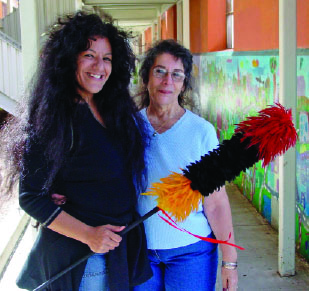
Aside from his artistic and cultural career, Rocky is father to our three children. Two sons—Angelo, the oldest, who is in music and the middle child, Frank, in the visual arts, collaborating with me in the illustration of many important Hawai‘i maoli texts. Our youngest, our daughter Natalie Mahina, was trained in the Hawaiian tradition of kāhili making––which she has rechristened “soft feather sculpture.” To this amazing expression, she has brought to the art an added spiritual dimension in uncovering the fact that the original artifact was used as a “soul catcher,” the very large ones used primarily in funereal processions or august events––the breeze or light winds signaling the presence of the ancestors. Her first art exhibit was with Hale Nauā III, at the age of 11 and by 18 had already been commissioned by corporate, public and private entities, her feather artwork gracing more than a dozen public sites in the islands and abroad. In 2006, she launched a tour and workshop on the continent, not only to teach kāhili making, but to educate the maker as to its spiritual significance. Her companion forté in the arts is her photography, which has been shown nationally, displayed in galleries and museums alongside her feather sculptures, and her graphic paintings, which emblazon on canvas her people’s ancient graphic designs in brilliant colors. Both she and I produced the book Daughters of Haumea, in 2006, it receiving the Palapala Po‘okela Award of Excellence in Hawaiian culture. Her photographs of 20 Hawai‘i maoli women, set in a pre-contact tableau, creating texture and substance to a past that still lives within her. To that already impessive list of accomplishments, she joins me in coordinating and curating for Hale Nauā exhibitions. Like her father, she is an impassioned champion of her cultural privilege, seeking always to right the wrong, adjust that which is askew and share the right path to whomever is listening. She is recognized as one of the founders of the MAA, the Maoli Arts Alliance, and MAMo, Maoli Arts Month, which foster the perpetuation of the indigenous visual arts.
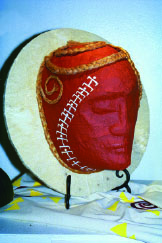
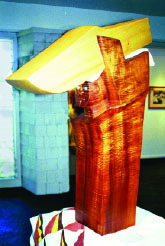
As for myself, in these latter years of my life I am dedicating myself to unveiling secrets hidden within the ancient language text. Having curated, coordinated those many exhibitions for Hale Nauā, touring with them throughout the entire West Coast, from San Diego to Vancouver, Canada, I now find it extremely fulfilling to travel with nothing but the word! In 2006 I had the privilege of touring California, Washington and Oregon with lectures on the Daughters of Haumea and other native Hawaiian subjects––culminating in a stage production of Daughters at the Palace of Fine Arts in San Francisco, under the directorship of dance director and master choreographer Patrick Makuakāne and his company, Nā Lei Hulu i Ka Wēkiu. We not only brought the same show to Honolulu’s Hawai‘i Theater, but toured it to the Carpenter Center in Long Beach as well––lecturing on the balance of polarity alongside the extravaganza of the stage production. This last year, I have again collaborated with Makuakāne on a dance piece commissioned by the Ethnic Dance Festival in San Francisco, for a stage production entitled Māui Dialogues, based upon another of my books. I am at present preparing several projects for publication––and all three of us are also building the foundation for our 35th year anniversary exhibition for Hale Nauā in 2010.
For those of you who want further information on either Hale Nauā III, Rocky K. Jensen or Natalie Mahina Jensen-Oomittuk, please e-mail the request to naua@hawaiiantel.net. Those who are interested in knowing more about the art created by Rocky or Natalie, we encourage you to contact us. Our Daughters of Haumea book can be found at the Lyman Museum and Basically Books in Hilo town and at Nā Mea Hawai‘i, at Ward Warehouse in Honolulu. ❖
Lucia Tarallo Jensen is a venerable lecturer, research historian, published author and curator of fine arts. She is the co-founder of the indigenous Hawaiian contemporary art group, Hale Nauā III, Society of Maoli Arts.
